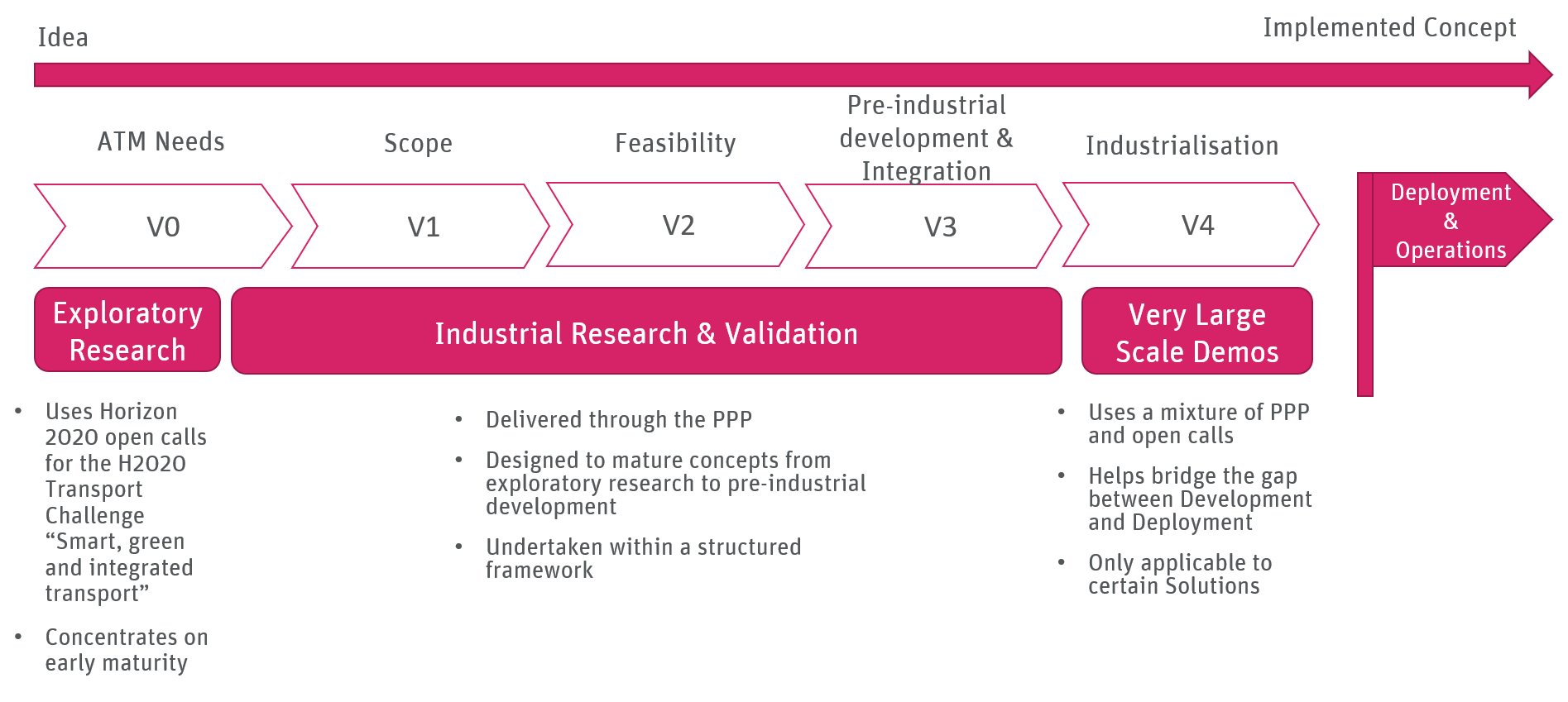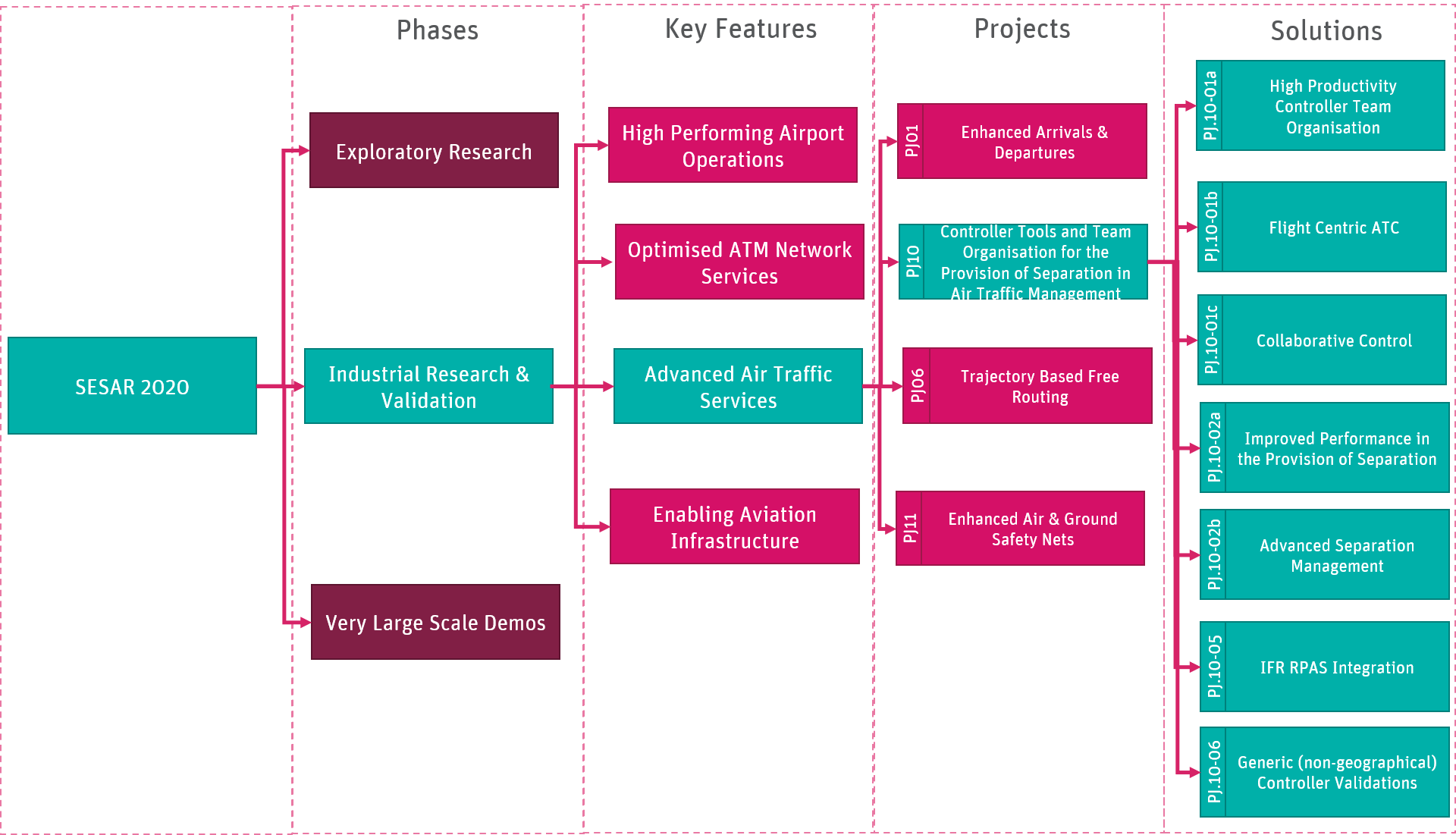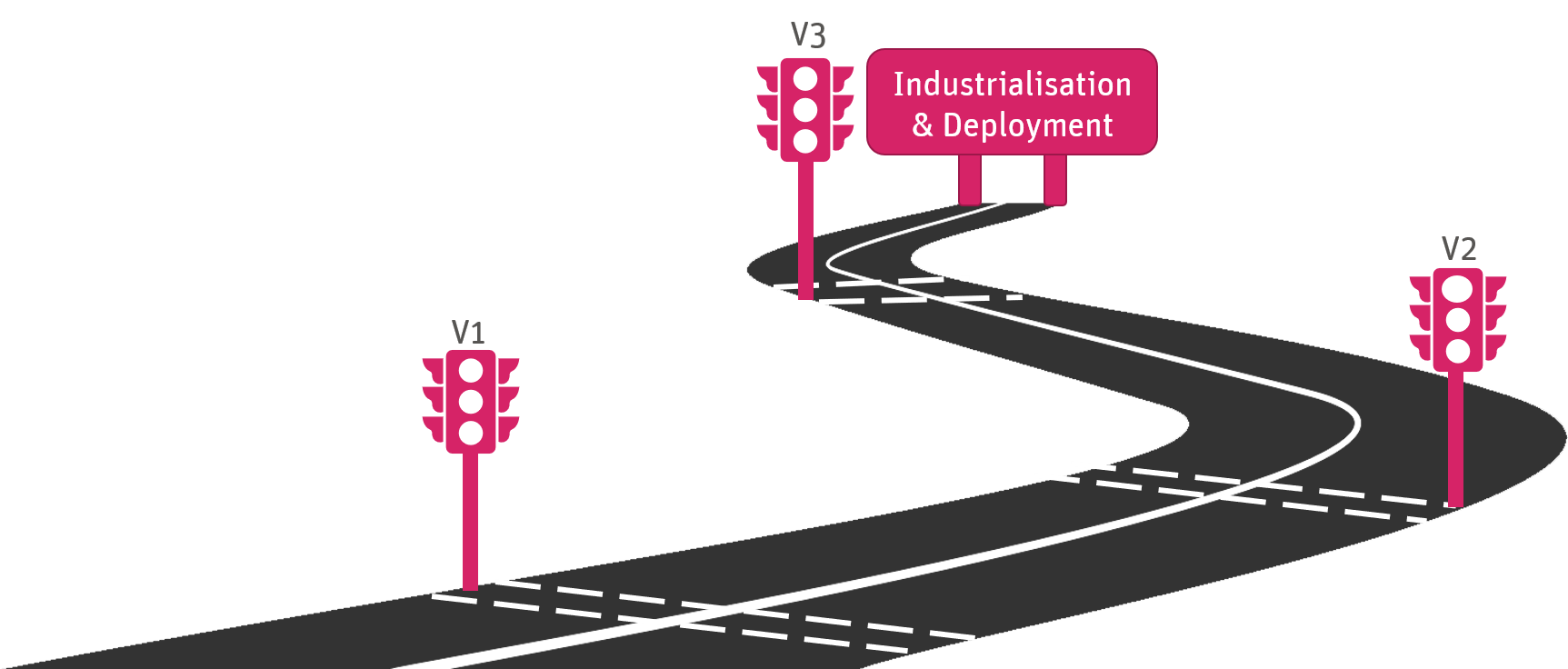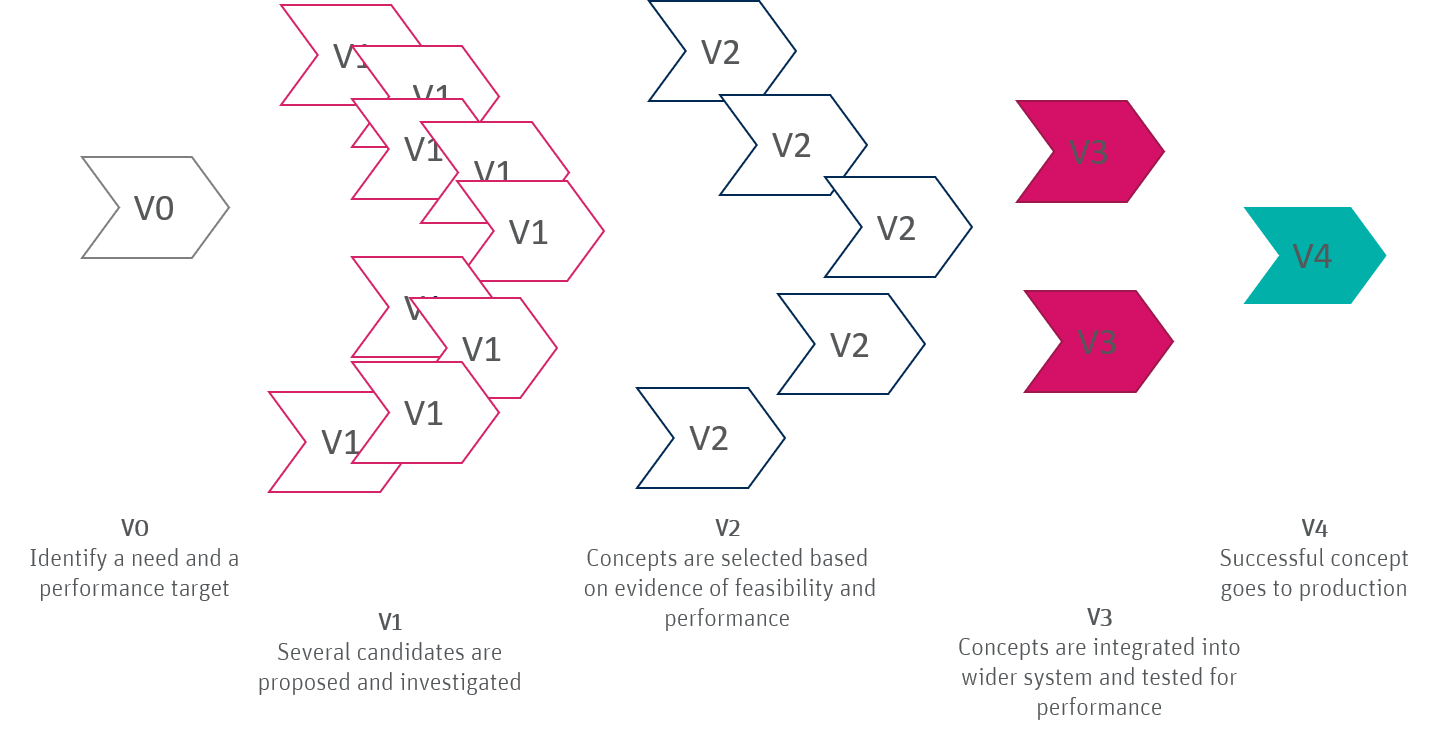In 2004, just as Think was starting, something else was born – the Single European Sky ATM Research Programme (SESAR). A few years later, in 2008, the SESAR Joint Undertaking (SESAR JU) was set up to manage the research and develop phases of the project. In the beginnings, most people who worked on SESAR JU projects had some grounding in ATM research and development or had chosen to get involved. However, as the scope of the programme increased and the number of people required to work on projects increased too, it became necessary to take people from all parts of the ATM community and often give them baptisms of fire into running large scale, collaborative ATM research and development projects.
With Think having worked on almost 50 SESAR JU projects, through the Definition Phase, SESAR 1 and SESAR 2020 and myself having worked in SESAR for over 10 years, we’ve learned a lot along the way. So if you find that you are now the company SESAR JU representative and main contributor, if you have had some prior involvement or even if you’ve never been involved before, what top advice would we give you to ensure you have a more seamless experience?
Before we begin, let’s learn the basics of SESAR
One of my first projects when joining Think Research almost ten years ago was Time Based Separation as part of a SESAR JU project investigating Flexible and Dynamic Use of Wake Vortex Separations. I remember being overwhelmed by the technical nomenclature and thought the deliverables were so difficult to navigate, with the actual text describing the concept surrounded by pages of jargon. Working in SESAR can feel like learning a new language. The process has adapted and improved over the years, but it does take a bit of getting used to. For that reason, it might help to begin with a more general introduction before we get down to handing out advice!
For those of you who are new to SESAR, SESAR 2020 is a European air traffic management research programme. It builds on its predecessor SESAR 1, aiming to deliver high performing technological and operational solutions for uptake by the aviation industry.
SESAR 2020 supports the Single European Sky (SES) and the EU Aviation Strategy’s vision to:
-
-
- Generate growth for European business;
- Foster innovation;
- Offer passengers more connections as well as safer, cleaner and cheaper flights.
-
SESAR 2020 is run by the SESAR Joint Undertaking (Public Private Partnership (PPP)) which consists of the founding members: European Union and EUROCONTROL, as well as 19 members representing Airports, Air Navigation Service Providers, the Manufacturing Industry and the Scientific Community. In addition, it works closely with Airspace Users such as Professional Staff Organisations, Global Partners, Regulatory Bodies and Standardisation Bodies.
The research is categorised into three strands including Exploratory Research, Industrial Research & Validation, and Very Large Scale Demonstrations. These have been designed to progress concepts from early maturity through to tangible solutions for industrialisation and subsequent deployment.

Figure 1: SESAR 2020 Phases vs. E-OCVM concept lifecyle model and maturity
Industrial Research and Validation is carried out using a structured framework. Within moments of opening a SESAR JU document, you will soon realise that there are lots of codes, numbers and acronyms and it can be a little overwhelming but it is soon easy to get to grips with. Structure is needed to try and create consistency and an organised, transparent and repeatable approach to concept development and validation. It also ensures traceability and helps understand how the Solutions fit together to create the global picture and help to achieve SESAR’s high level goals. It is really important to understand the programme structure. If your company is involved in SESAR, you should be given access to the SESAR JU extranet, known as STELLAR. Here you will find lots of guidance material to support the structured framework such as guidelines and templates.
Focussing on the Industrial Research and Validation Phase, projects are categorised under four different key features:
-
-
- High Performing Airport Operations;
- Optimising ATM Network Services;
- Advanced Air Traffic Services;
- Enabling Aviation Infrastructure.
-
Within each project, you will find a variety of Solutions. These are new or improved operational concepts, procedures or technologies that aim to contribute to the modernisation of the European ATM system. They range from quick win options to more complex solutions therefore can be at differing stages of maturity. Each Solution is performance driven and is assessed according to Key Performance Areas such as Safety, Cost Efficiency, Capacity or the Environment at specific stages of flight, and in specific operational environments, with benefits applicable to particular stakeholders.

Figure 2: Example of how SESAR 2020 phases, key features, projects and solutions fit together under the PJ10 project
Tips
Now you know the basic structure of where SESAR Solutions originate from, here are my top three tips for working on them in the SESAR Industrial Research and Validation phase…
Tip 1: Consider the impact on Performance right from the start
Performance lies at the heart of SESAR 2020. It runs through the backbone of deliverables from Validation plans to Operational Conceptual and Requirements Documents such as the Operational Services and Environment Definition, so should always be at the forefront of your mind. Each SESAR Solution should produce benefits in some form and will be assessed according to Key Performance Areas. SESAR 2020 have something called Benefit Impact Mechanisms to help you understand what benefits different elements of the Solution bring (and potentially a trade-off in other areas).
Quantitative Validation Targets will be set per Solution (e.g. Solution X is expected to increase peak runway throughput by y%) and it is important to keep these Validation Targets in the forefront of your mind whilst working on a Solution as these should form the focus of development. The Validation Targets from all SESAR Solutions added together, are enforced to help achieve SESAR’s high level objectives. The SESAR guidance material will help to understand the types of Key Performance Indicators (KPIs) and the data collection needed to help ensure you address/contribute to your Validation Targets. These will form the basis of how you report against each of your objectives e.g. the success criteria.
Ensure the impact of your Solution on performance is planned from the start rather than as an afterthought. Operational acceptability is still important but do not forget to consider the impact of the Solution on the relevant Key Performance Areas and what data in particular is required by the SJU.
Sometimes KPIs can be difficult to measure and need careful consideration. For example, on a recent Solution, one of the KPAs was Environment with Fuel Efficiency the focus area. The mandatory KPI we had to assess was the average fuel burn per flight. Therefore, in the experimental design, we needed to ensure we made a fair comparison between trajectories and between runs using a Reference and Solution Scenario. This requires early planning or you can get into a right kerfuffle!
Tip 2: Do not feel pressured to move through the maturity levels at the expense of quality of the Solution
A series of activities are described at the Definition Phase to help develop, validate and mature Solutions with the final aim of developing Solutions for industrialisation and deployment. To support this process, a series of SESAR deliverables are necessary at each stage of maturity with checkpoints to check progress and ensure the Solution is on track to achieve its aims and therefore contributing to SESAR’s high level goals.

Figure 3: SESAR Gate Reviews leading towards industrialisation (v4) and deployment (v5)
Similar to travelling along a road, and reaching a series of traffic lights, SESAR set up “Gate Reviews” to ensure there is enough evidence (the correct type) and a set of maturity criteria have been achieved before progressing to the next phase. This can help avoid expensive mistakes being made. At each set of traffic lights, if the criteria is not met you cannot travel through the gate or “pass go” and you must instead perform additional development and assessment in that maturity level if you want to progress.
This leads onto my second tip. Often validation practitioners feel under pressure to ensure the concept they are working on is successful and therefore want to rush their concept through the “gate”. Do not feel ashamed if the concept you are working on was not as favourable as expected or does not produce the benefits that were envisaged.
A lot of times, validation experts are brought in to independently assess a given Solution so they can provide an impartial view. If the validation team is the same as the concept development team, it can be difficult to accept any negative feedback on concepts that you have spent weeks slaving over. This is why constant stakeholder engagement is also important to ensure you keep on track!
When working on a recent solution whereby a validation exercise addressed multiple variants of a concept, some of these elements worked whilst others needed more development. This is okay. Some Solutions need a bit more tweaking along the way before performance benefits are realised whilst others may get stopped at a red light and may not complete their journey. This is the whole point of validation and research by ensuring we invest our future money and efforts in the right concepts that will provide value.

Figure 4: Concept Maturity and Selection – from understanding ATM needs in v0 through to the industrialisation phase in v4
Tip 3: Do not be afraid to use the guidelines as “guidelines”, interpret them in your own way as long as you justify yourself
On occasion, you may find that work on your Solution does not quite work with the given templates. Remember, the SESAR templates are there to provide support and guidance. Do not be afraid to interpret the guidelines and deviate slightly from the suggested approach if you can justify this.
For example, in SESAR 2020, the Project Handbook clearly states that at V1, an initial quantitative performance assessment is expected. Performance assessments are important at all stages of maturity as it helps to identify potential benefits but making these quantitative at such early maturity is challenging. Most of the validation exercises performed at V1 level are low scale as you do not want to invest a lot of money in a concept that might not work. Therefore, it is difficult to provide a satisfactory level of confidence in quantitative results. How can you quantify benefits when you still trying to explore what the operational or technological solution is?
One of the validation targets assigned to one of the most recent Solutions we worked on was an improvement in Cost Efficiency through an increase of 2.667% in ATCO Productivity in a Low Complexity En-Route operational environment. In this Solution, we had only conducted a gaming validation technique where we stepped through various scenarios using model aeroplanes and charts with controllers to understand the operational needs and how to mitigate these. Therefore, we had to think on our feet how we could produce quantitative evidence. We decided to conduct very basic modelling of controller scheduling and the impact on these with the introduction of the new Solution. This was conducted using Excel using a list of high-level assumptions to provide the necessary input into the Performance Assessment. Although very fundamental, it was something that could be expanded in future validation exercises at a later stage of maturity and although it may not have been what the SJU were initially looking for, we used our imagination and creativity, resulting in the fact we passed the gate review. Result!
Conclusion
Overall, working on SESAR research and innovation has been a positive experience. I have learnt so much over the past ten years. I have worked on many exciting and varied Solutions and met some amazing people from different aviation companies from all over Europe. However, it does take time to learn the ins and outs of SESAR 2020 and how to use the structured framework and guidance material.
More support than ever is now available with the introduction of Project Content Integration Team (PCIT) ensuring that your Solution has the appropriate content and that the information of dependent solutions is consistent and complete. The guidance material, although slightly open to interpretation (as described above, this is sometimes a good thing!) is getting better although still could be improved further to help those who are complete newbies to SESAR research and innovation. If I could change one thing, it would be to make updates to the intranet which is a complete minefield of information so that people can navigate quickly to find the information and support they need.
Think have vast experience in the SESAR 2020 programme, having worked on SESAR 1 and SESAR 2020 so are familiar with its structure and aims. We were even performing validation activities for EUROCONTROL and European ANSPs on SESAR related concepts long before SESAR ever existed. If you need support in SESAR or want to ask us a question, please contact us and we will be happy to help.

Author: Sarah McLarty, ATM Consultant


Recent Comments